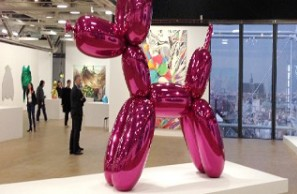
The salvation of beauty
Harmony and peace have a profound relationship, just look at what countries look like before and after wars, just look at cities and even rivers and forests in a war zone.
just look at what countries look like before and after wars, just look at cities and even rivers and forests in a war zone.
It’s not a question of locking up regions of the planet, through climate and environmental change the impact on all of creation is immediate, because even if we want to live in a bubble, contact with the air, water and riches is impossible to notice.
This also applies to culture and politics. Everything seems to be a reflection of the mistreatment and lack of sensitivity to what is truly beautiful and in harmony.
For Hegel, according to his vision of aesthetics and therefore of beauty, it is science that deals with artistic beauty and not natural beauty. For him, natural beauty is the product of the spirit (Geist), and, being its product, it is part of the truth and of everything that is in nature.
Sculpture is considered a “noble” art, says Hegel: “Sculpture introduces God himself into the objectivity of the external world; thanks to it, individuality manifests itself externally through its spiritual side” (Hegel, 1996, p. 113), again the exterior is objective, a sculpture and not a Being, the other and with him all his subjectivity.
Symbolism, on the other hand, is what “seeks to achieve the union between inner meaning and outer form, that classical art achieved this union in the representation of the substantial individuality that addresses our sensibility, and that romantic art, spiritual by essence, surpassed it” (Hegel, 1996, p. 340).
For the German-Korean philosopher Byung-Chul Han, who wrote Die Errettung des Schönen (The Salvation of Beauty), a new thread runs through the question of beauty, with what he has called in other books the “lack of negativity of our age”.
We are in the age of plastic, glass and the smooth, “imperfection” is part of creation and so it is not the Greek beauty, the new forms that contemporary culture seeks, that we will find a new culture and a creative way of relating to nature.
Subjectivity is confusingly smooth, without interiority and difficulties (Chul-Han’s palliative society), it submits to a simplism that wants to smooth and polish everything, therapies to overcome fear, anguish, even religious worship is repetitive and pure “indoctrination”, readings without any hermeneutics and full of old and outdated exegesis, just as lectures should entertain and not teach, means of communication are confused with their ends (which is para-communication).
Contact with the beauty of nature is changed by its “domination”, “exploitation” and then an attempt is made to restore it by “purifying” the natural with cement, stone and violence, Han gives as an example the art of Jeff Koon, (see photo above) of the art of Jeff Koon (see photo above) of plastic figures “idealized from the inside and the form on the outside.
Han, B.C. (2015) Die Errettung des Schönen (A salvação do Belo), DE: Fischer Verlag.
Hegel, George W. (2001) Cursos de estética. Brazil, São Paulo: Edusp.









